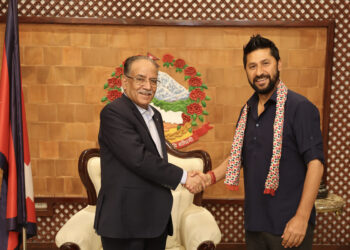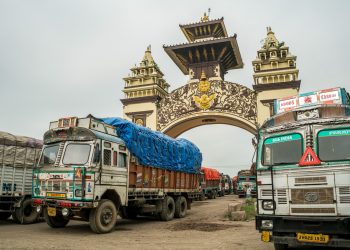Governments do change. There is also many precedence of shift of power due to popular revolt.
Bangladesh has gone many steps ahead. In an effort to disregard former Prime Minister Sheikh Hasina’s 15-year rule (2008-2024), they are trying to disregard the past along with the country’s extraordinary achievements and the reasons behind it.
The move landed them to a political turmoil which may potentially end up in an anarchy and underdevelopment trap, signified by a cycle of sustained unrest and low investments impacting the long-term income potential of the economy.
Between 1972 and 1991, when Bangladesh was largely under army rule, its gross domestic product grew from roughly $6 billion to $ 31 billion (at current prices)i.e five times.
India stepped up VISA approvals to Bangladeshi citizens by nearly 10-times. This had helped Bangladeshi citizens in accessing super-specialty healthcare at affordable cost in Indian hospitals.
On the flip side, Bangladesh was then abysmally poor. The growth therefore had the advantage of low base. In the first decade of democratic rule since 1991, Bangladesh’s GDP increased by 74%, from $31 billion to $54 billion.
Between 2001 and 2011, GDP grew by more than double to $129 billion. In the very next decade (2011-2021), the economy, now fairly big, expanded by over three-times to $416 billion.
The impact of such growth is visible in many other indicators like per-capita income, market capitalisation of domestic companies etc.
The most significant impact came on living conditions.
As the country became more prosperous, families did not send minors to work. Child labour declined dramatically since 2006.
The job was easier said than done. Hasina came to power in January 2009 in the backdrop of global financial meltdown in end-2008.
The meltdown shook the world. World’s largest banks failed. Economies like Greece were on the verge of bankruptcy.
The global financial system was in disarray. From November 2008, global energy prices were on a sustained upswing.
The Fukushima nuclear disaster in 2011 added to the pressure. Crude oil prices rallied at $100 a barrel on average till 2014.
Coal was selling at two to three-time higher prices in the global market. One can imagine the impact on an energy importing nation.
All large economies from USA to China were struggling but, Bangladesh staged dramatic growth.
The reason lies in out-of-the box thinking which was absent in her first term in office between 1996 and 2001.
After assuming power in 2009, Hasina worked steadfastly to normalise relations with India.
In 2010, India offered Bangladesh $1 billion credit to revamp infrastructure.
That was the largest support Bangladesh ever received. Between 2010 and 2012, India brought down tariff wall for imports from Bangladesh and other less-developed economies to zero.
The cooperation later extended to many areas including defence hardware, where India is an emerging global exporter.
India’s soft loans and aids to Bangladesh – including nearly $ 2 billion loan towards Rampal power station – exceeded $ 10 billion.
Notably, Rampal project contract was awarded to India through globally competitive bidding participated by Korea, China etc.
The two countries resolved their land and maritime border disputes. The later is particularly significant as it helped Bangladesh’s offshore oil and gas exploration.
There are also many agreements, protocols in ensuring cheap movement of goods by land, river and sea between the two countries.
Air connectivity increased manifold. Cooperation was extended to agriculture, education, healthcare etc.
This led to the infrastructure building spree in Bangladesh, the most significant of them was the competition of Padma Bridge that connected two parts of the country.
India stepped up VISA approvals to Bangladeshi citizens by nearly 10-times. This had helped Bangladeshi citizens in accessing super-specialty healthcare at affordable cost in Indian hospitals.
The cooperation with India helped Bangladesh in tapping new market for its ready-made garments (RMG).
According to ITC Trade Map mirror data, back in 2010, Bangladesh exported barely $357 million worth of goods with very little RMG to India.
The export figures between 2021 and 2023 are $1.7 billion, $2 billion, $1.8 billion. Critically, the pace of growth of Bangladesh’s exports to India is far higher than the growth of Indian exports to Bangladesh.
In 2023, Indian exports to Bangladesh declined by over 18% by Indian imports from Bangladesh were down by only 5%.
Incidentally, India is Bangladesh’s 7th largest export destination, China is 13th. That is only natural because, India is next door neighbour.
During Covid when maritime trade came to a standstill or prices skyrocketed, Indian trucks and trains carrying everything from daily essentials to raw material for the RMG kept Bangladesh moving.
Bangladesh also got its first batch of covid vaccines from India. The world became extremely uncertain post-covid. Rising geopolitical tensions and wars, sent shockwaves.
Not only price shock, there were serious concerns for availability of essentials from energy to food.
India is a major played in the global food market and it suspended exports several times. But, Bangladesh and other friends enjoyed uninterrupted supply.
It is not that cooperation with India alone had changed Bangladesh’s fortunes. But it did trigger a change.
Dhaka running an overdue of $800 million to one private supplier. A conflicting stand with India, may invite widespread damage to the economy.
After India offered financial support, China and, multilateral agencies like Asian Development Bank came out with huge credit offers.
This led to the infrastructure building spree in Bangladesh, the most significant of them was the competition of Padma Bridge that connected two parts of the country.
On the other hand, cooperation with India helped Bangladesh reach out to Nepal and Bhutan.
In the last prime ministerial India offered to create infrastructure for Bangladesh to purchase hydro power from Nepal.
Dhaka was also offered railway transit corridor to Bhutan in exchange of Indian corridor to Northeast.
By taking a stance to deny anything and everything that Hasina did, Bangladesh is running the risk of snapping many lifelines.
The most critical of them is the energy lifeline. India now meets anywhere between 15-20% of the electricity demand of Bangladesh.
Dhaka running an overdue of $800 million to one private supplier. A conflicting stand with India, may invite widespread damage to the economy.









Comment